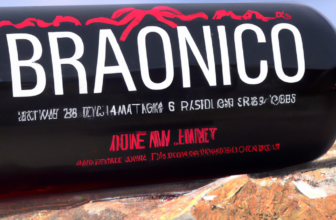
The Rise of Californian Rosé: Breaking Stereotypes in the Wine Industry
Californian Rosé: Breaking the Oxymoron Stereotype
The wine industry is known for its rich traditions and strict adherence to certain norms. However, in recent years, there has been a shift in the industry, with Californian rosé wines breaking the stereotype of being an oxymoron. Traditionally, rosé wines were associated with light, fruity flavors and were often dismissed as being less sophisticated than their red and white counterparts. However, Californian winemakers have been challenging this perception by producing high-quality rosé wines that are gaining recognition and popularity worldwide.
One of the reasons behind the rise of Californian rosé wines is the unique climate and terroir of the region. California is blessed with a Mediterranean climate, characterized by warm, sunny days and cool nights. This climate allows the grapes to ripen fully, resulting in wines with intense flavors and vibrant acidity. Additionally, the diverse terroir of California, with its varied soil types and microclimates, provides winemakers with a wide range of options when it comes to grape selection and blending, resulting in wines that are complex and nuanced.
Another factor contributing to the success of Californian rosé wines is the innovative winemaking techniques employed by the region’s winemakers. Unlike traditional rosé production methods, which involve bleeding off a portion of red wine during fermentation, Californian winemakers are using a variety of techniques to produce rosé wines with more depth and complexity. These techniques include direct pressing, where the grapes are pressed immediately after harvest, and saignée, where a portion of the juice is bled off from red wine fermentation. These methods allow winemakers to control the color and flavor profile of the wine, resulting in rosé wines that are more robust and flavorful.
Furthermore, Californian winemakers are not afraid to experiment with different grape varieties when it comes to producing rosé wines. While traditional rosé wines are often made from Grenache, Syrah, or Mourvèdre grapes, Californian winemakers are using a wide range of grape varieties, including Pinot Noir, Zinfandel, and even Cabernet Sauvignon, to produce their rosé wines. This experimentation has resulted in a diverse range of styles and flavors, catering to a wide range of palates.
The rise of Californian rosé wines has also been fueled by changing consumer preferences. In recent years, there has been a growing demand for lighter, more refreshing wines, and rosé wines have emerged as the perfect choice. Californian rosé wines, with their vibrant acidity and fruit-forward flavors, are well-suited to meet this demand. Additionally, the rise of social media has played a significant role in popularizing rosé wines, with influencers and celebrities often seen promoting these wines on their platforms.
In conclusion, Californian rosé wines are breaking the stereotype of being an oxymoron in the wine industry. The unique climate and terroir of California, coupled with innovative winemaking techniques and a willingness to experiment with different grape varieties, have resulted in high-quality rosé wines that are gaining recognition and popularity worldwide. With changing consumer preferences and the rise of social media, it is clear that Californian rosé wines are here to stay. So, the next time you’re looking for a refreshing and flavorful wine, don’t overlook the Californian rosé section.
Exploring the Diversity of Californian Rosé: Beyond the Oxymoron

Californian Rosé: Breaking the Oxymoron Stereotype
Exploring the Diversity of Californian Rosé: Beyond the Oxymoron
When it comes to wine, California is often associated with bold and robust reds, or crisp and refreshing whites. However, in recent years, Californian rosé has been making a name for itself, breaking the stereotype of an oxymoron. This article will delve into the diversity of Californian rosé, showcasing the range of styles and flavors that can be found in this vibrant category.
One of the reasons why Californian rosé has gained popularity is its versatility. Unlike traditional rosés from regions like Provence, which are typically light and delicate, Californian rosés can be found in a variety of styles. From bone-dry to slightly sweet, there is a Californian rosé to suit every palate. This diversity allows wine lovers to explore different expressions of the varietals used in rosé production, such as Pinot Noir, Grenache, or Zinfandel.
In terms of flavor profiles, Californian rosés offer a wide range of options. Some are bursting with ripe red fruit flavors, like strawberries and raspberries, while others showcase more tropical notes, such as watermelon and peach. The warm climate of California allows the grapes to fully ripen, resulting in wines with intense fruit flavors and a luscious mouthfeel. This richness sets Californian rosé apart from its European counterparts, offering a unique and indulgent experience.
Another aspect that makes Californian rosé stand out is its vibrant color. While traditional rosés are often pale pink or salmon-colored, Californian rosés can be found in shades ranging from pale pink to deep ruby. This variation in color is a reflection of the winemaking techniques employed, such as maceration time or blending with red wine. The visual appeal of Californian rosé adds to its allure, making it an attractive choice for wine enthusiasts looking for something visually striking.
In addition to its diversity in style, flavor, and color, Californian rosé also benefits from the state’s commitment to sustainable and organic farming practices. Many wineries in California have embraced environmentally friendly viticulture, ensuring that their grapes are grown with minimal impact on the land. This dedication to sustainability not only contributes to the quality of the wines but also aligns with the growing consumer demand for eco-conscious products.
Furthermore, Californian rosé has gained recognition on the international stage, with numerous accolades and awards. This recognition is a testament to the skill and expertise of the winemakers, who have successfully crafted exceptional rosés that can compete with the best in the world. The growing reputation of Californian rosé has attracted attention from wine enthusiasts and critics alike, further solidifying its place in the global wine market.
In conclusion, Californian rosé has broken the stereotype of an oxymoron, offering a diverse range of styles, flavors, and colors. Its versatility, vibrant flavors, and commitment to sustainability have contributed to its rising popularity. Whether you prefer a dry and crisp rosé or a fruit-forward and indulgent one, Californian rosé has something to offer. So, the next time you’re in search of a refreshing and vibrant wine, look no further than the diverse world of Californian rosé.
Californian Rosé: Redefining Tradition with a Modern Twist
Californian Rosé: Breaking the Oxymoron Stereotype
Californian Rosé has been making waves in the wine industry, redefining tradition with a modern twist. Traditionally, rosé has been associated with light, delicate wines from regions like Provence in France. However, California has emerged as a powerhouse in the production of this vibrant and refreshing wine.
One of the reasons Californian Rosé has gained popularity is its ability to break the oxymoron stereotype. The term “oxymoron” refers to a figure of speech that combines contradictory terms, such as “jumbo shrimp” or “deafening silence.” In the wine world, the idea of a bold and flavorful rosé seemed contradictory, as rosé was often seen as a light and delicate wine. However, Californian winemakers have challenged this notion by producing rosé wines that are both bold and flavorful.
The secret behind Californian Rosé’s success lies in the unique terroir of the region. California’s diverse microclimates and soil types provide winemakers with a wide range of options when it comes to grape selection. This allows them to create rosé wines with different flavor profiles, ranging from crisp and citrusy to rich and fruity.
Another factor that sets Californian Rosé apart is the winemakers’ commitment to quality. Many wineries in California have adopted sustainable and organic farming practices, ensuring that only the best grapes are used in the production of their wines. This attention to detail is reflected in the final product, with Californian Rosé consistently receiving high ratings and accolades from wine critics.
In addition to its exceptional quality, Californian Rosé also offers a sense of adventure and innovation. Winemakers in California are not afraid to experiment with different grape varieties and winemaking techniques, resulting in a diverse range of rosé wines. From traditional blends of Grenache and Syrah to more unconventional combinations like Pinot Noir and Zinfandel, Californian Rosé offers something for every palate.
Furthermore, Californian Rosé has become synonymous with the laid-back and vibrant lifestyle of the region. The wine’s bright and refreshing flavors make it the perfect companion for outdoor gatherings and sunny days by the pool. Its versatility also makes it a great choice for food pairing, as it can complement a wide range of dishes, from fresh seafood to grilled meats.
As Californian Rosé continues to gain popularity, it is challenging the traditional notion of what a rosé wine should be. It is no longer confined to being a light and delicate wine; instead, it has evolved into a bold and flavorful option that can stand on its own or be paired with a variety of foods.
In conclusion, Californian Rosé is breaking the oxymoron stereotype by redefining tradition with a modern twist. Its unique terroir, commitment to quality, and sense of adventure have made it a force to be reckoned with in the wine industry. Whether you are a wine connoisseur or a casual drinker, Californian Rosé offers a refreshing and exciting option that is sure to please. So, the next time you are looking for a wine that combines the best of both worlds, give Californian Rosé a try and experience the taste of tradition with a modern twist.






